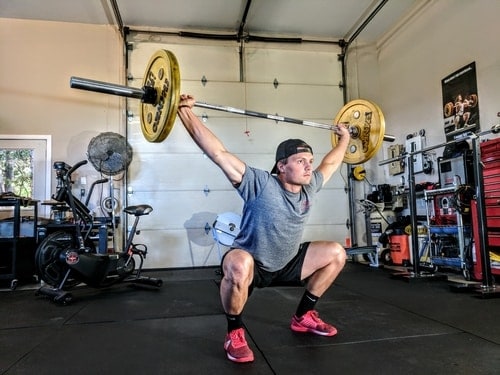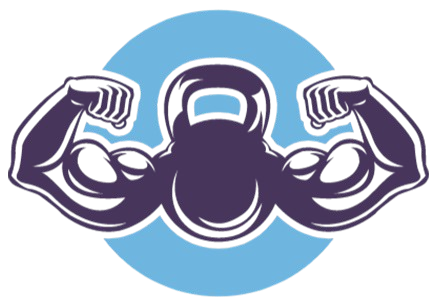Fitpro Income
Personal Training Niches, Do You Really Need One?
You have probably been told to find your niche on your training courses, and every blog you read tells you that you’re going to need one if you want the big bucks in personal training.
But how do you find your personal training niche, what are your options, do they work and should you have one?
Lot’s of important and pretty big questions to answer in today’s article, so sit back and have a read. By the end of this article, you should know which niche you want to focus on, or maybe you’ll decide you don’t even need one.
Let me take you through some of the more common personal training niche ideas, and how they could help or hinder you.
Sound good?
Let’s go…..

So, you’ve read everywhere that in order to be successful in a gym, you need to have a niche. That’s the best way of making sure you are the “go-to guy” for anyone wanting to train in that discipline right?
Well, yes, I totally agree with that as an idea. After all, if you are either the only person to that knows how to train people in a certain discipline, or at least you are the very best trainer in the gym to instruct it, why would gym members go to anyone else?
It seems like the totally logical thing to do doesn’t it? Certainly from a business standpoint, to have the opportunity to run the monopoly on a training style in a gym is a great idea.
Of course, in reality, things are a little more complicated than that, but before we go into detail about the pros and cons of “niching down”, let’s take a look at the list of personal training niches most common for trainers to specialise in, and then you can decide which (if any) you want to investigate further.
Now, this is a doozy of an article, so I will add links to each of the niches and my explanations of them to make things a little easier for you to navigate.
What are some of the most common personal trainer niches?
- Weight loss
- Hypertrophy (muscle building)
- Power training
- Postural correction
- Functional training
- Pre/postnatal training
- Sports specific training
This list is not exhaustive, there are plenty of others out there that get really specific, but these are the main ones that you will see personal trainers listing as their specialities on their profile boards.
The absolute most common “niches” you will see people stating they are experts in are weight loss, strength training and muscle building.
These are of course seriously broad “niches”, to the point where you could argue they are no longer niches at all, however, we will get into all that a little later on.
For now, let’s dive into each a little closer to see what they consist of.
1.Weight loss

Approximately 37% of UK residents between 35-44 years old are considered to be overweight, with a further 29% of people in this age range considered to be clinically obese.
The aim of specialising in helping people to lose weight would be that you would be considered to have an expert level of knowledge to guide people towards their weight loss goals in a safe and effective manner.
You will give a high level of expertise in not only exercise guidance, but also dietary advice and potentially, a full nutritional programme if you have the qualifications that enable you to do this.
You will create tailored workout programmes that are specialised towards weight loss as a goal, whilst taking into account any safety factors for overweight individuals such as raised blood pressure or heart conditions present as a result of a higher body fat percentage.
In order to be considered a specialist, you will need to be highly focused on learning and researching the most up to date and effective methods of fat loss. You would also need to understand the leading causes of weight gain, such as dietary and psychological causes.
Why is it a good niche?
From all my year’s training people, a very large percentage of my clients were looking to lose weight. Most would certainly not have been considered obese, it was more often than not that people wanted to lose weight to increase their self-esteem and confidence.
Due to the sheer number of people in the country that fit the profile of being overweight, I would say that this is a good coaching niche to get into. You will not struggle to find members in gyms looking to lose weight and shape up. In fact, you will probably get to the point where you get tired of hearing it.
People hiring a personal trainer want to see results and they want to see them quickly, especially if they are paying considerable money for the help of a trainer.
Weight loss clients are some of the easiest and fastest to show results, as with only a few simple-to-follow dietary changes and a few workouts with yourself each week and a few of their own, the client will very easily start to lose weight.
Once a client starts to see the progress from their sessions materialise (numbers going down on the scale for example), their motivation will soar sky-high.
This is why overweight clients are great to get testimonials from, as the before and after images tend to be the most impressive to a large number of people and will result in you gaining new clients.
Why is it a bad niche?
The next time you are in a gym, take a look at the personal trainer profile boards and just count up how many of the trainers there list “weight loss” as one of their specialities.
I am willing to bet that most, if not all the trainers there will say they are experts at helping clients achieve weight loss.
The problem you have is that it’s overly saturated.
Trying to stand as the personal trainer to go-to for weight loss in any particular gym is neigh impossible, as every trainer will claim they have clients that lost the most etc.
What is going to make you stand out as a trainer that people would go to instead of another?
Very little!
It’s also very difficult to keep track of what your client is doing when outside of your sessions. Are they sticking to their diets? Are they exercising the way they are telling you they are and as often?
You can never know what any of your clients are doing outside of their sessions, after all, you are not their babysitter.
However, it is my own experience that people who are looking to lose weight tend to want to see results the fastest, and if they don’t see the results they are after on weigh-in day, they are likely to look to another trainer or give up entirely.
2. Hypertrophy training

The purpose of hypertrophy training is to help clients gain a larger amount of skeletal muscle. This is achieved with progressive overload by ensuring your client is lifting ever heavier weights over a period of time.
Volume, weight and tempo can all be utilised in order to put enough strain on the muscle that micro-tears occur to the fibres that make up the muscle. As a by-product of repair, the muscle fibre is grown back thicker than it previously was, increasing its size.
Muscular hypertrophy takes place at a microscopic level, so progressive overload must be maintained for several weeks to months at a time in order to see results.
Why is it a good niche?
Hypertrophy training is good because people who request it are usually very understanding of the time and effort that is required once it is fully explained to them.
The majority of my clients looking for hypertrophy training for muscle size and shape had little understanding of what was required in order to achieve the look they were looking for.
There is also a great amount of dietary knowledge required when a client is looking for noticeable muscle and size gain. This knowledge is uncommon, and many members may have been frustrated after going to the gym for many months or even years without seeing any real results.
This makes them very easy to teach, as they will likely be surprised at what is required and to learn why what they have been trying themselves hasn’t been working.
I found that people who wanted to gain size were usually the more determined of my clients. They would make sure they were eating what I had suggested and I saw them training in the gym most days of the week.
Why is it a bad niche
Time, patience and your clients lack of both.
Training people to lose weight is fast, clients looking for this can see results in weeks, let alone months.
For clients looking to put on muscle mass, the exact opposite can be true.
It can take months and months to see even the smallest amount of progress with hypertrophy training which can put a lot of people off. People want to see the fruit of their labour, and if they are paying £50 per session a few times a week and see nothing for this after a month of training, the less determined of your clients may start to lose interest.
An issue some people have with hypertrophy training is that progressive overload training hurts!
It is painful to put a large weight through your muscle and hold it long enough to tear the fibres that make it up. It is painful during the exercise, and it is painful the following few days as your body recovers and repairs itself.
And finally, you will have a limited amount of people in a gym that are looking to get bigger. In all my years as a personal trainer, I never once had a female ask me to help them gain muscle, usually, it was quite the opposite.
This means you will only (usually) be training males, so that cuts your options down by half straight away, and just like weight loss, almost every personal trainer in the building will have been taught how to help people gain muscle mass.
The competition you will come up against in a gym from other trainers will be enormous!
You will need some seriously good before and after pictures and client testimonials to make someone choose you as their trainer over another. It’s certainly possible, but it’s very difficult.
3. Power training

Power training focuses on increasing your clients’ explosive strength. It’s is usually people with a background in sports such as athletes that request this type of training programme.
There will be a combination of both plyometrics and strength training, as speed+strength=power.
Power training techniques will include, jumping (plyometrics), ballistic training, complex training (which is alternating between strength and plyometric exercises), and explosive power lifts (such as power cleans and clean and jerks).
Power training is usually reserved for more experienced lifters as there is a higher chance of injury due to the speed the movements are completed at.
There is however the option to give less experienced clients power-based exercises, such as box jumps and sprint training in order to help expand their spatial awareness and proprioception.
Why is it a good niche?
Power training is a great niche because many trainers stick to the standard hypertrophy and weight loss programmes as these are more commonly requested.
This enables you to very easily become the expert in a gym full of trainers if you focus your efforts on knowing as much as possible about the benefits of power training and the type of clients to approach in regards to it.
You will also find that trainers that omit the strength training phase from a periodised training programme will have clients who make much slower progress.
Developing explosive power is hugely beneficial for someone looking to gain more muscle size and strength. It can also help people to break through progress plateaus, which is a major sticking point for many clients.
Why is it a bad niche
Very few clients are going to understand the importance of developing their power and explosive strength levels.
A client will very often understand why growing more muscle mass is a good thing, and the same for endurance and even strength, but when it comes to power, people don’t tend to understand why they need to be jumping onto boxes for several weeks at a time.
Clients will usually feel a certain degree of post-exercise soreness the next day, which they may associate with an effective workout (I am aware that’s not always true), but with power training, they often do not feel this soreness.
They also may not sweat as much as they did during their endurance sessions which may lead them to believe that this section of the periodised training cycle is not as effective as the others.
Because people undervalue the benefits of power training, there is very little demand for it. If you dedicate a lot of your time to specialising in this type of training, you could find yourself with a lot of expensive courses under your belt but a very empty diary.
4. Postural correction

Postural correction programmes focus on correcting muscular imbalances that are caused by modern living and create common issues such as lordosis, kyphosis and scoliosis.
The training style is vastly different from most that you will see in gyms, as it mostly focuses on using very light weights in a deliberate and controlled manner in order to work specific muscles through certain planes of movement.
The idea of postural correction exercises is to strengthen weaker muscles and loosen overly tight muscles to correct the postural issues they have caused.
Why is it a good niche?
If you plan to become a trainer in a city or very built-up area, your client base will be primarily made up of office workers and people who are sitting down for upwards of ten hours per day.
This population is prone to many postural issues that can cause them a great deal of pain and discomfort. They will likely have no knowledge of why they have this pain or how to correct it themselves.
Because of the complexity of the training style, you will have very little competition from other trainers for these types of clients. The majority of trainers will want to stick to the more simple and in-demand training styles such as muscle building and weight loss.
If you are one of the few trainers who are enthusiastic about this line of training and are knowledgeable on how to correct the issues, you can become a very sought after trainer if there are the right type of clients in your gym.
Why is it a bad niche?
Postural correction is complex and can be easily misunderstood if not taught correctly. If inappropriate exercises are prescribed by a trainer who has not fully understood what they have been taught, they could end up causing more damage than they fix.
People don’t understand the need for postural correction.
This makes selling the virtues of this type of training very difficult, and so you could again find yourself with a great deal of knowledge but with a diary that deserves to be much busier.
I have seen trainers in gyms who were incredibly knowledgeable about postural correction, to the point that they almost sound like doctors when you speak to them. I saw these trainers conducting no more than five to ten sessions per week.
5. Functional training

Functional training focuses on taking people through exercise programmes and movement patterns that incorporate more realistic or (functional) movements.
The idea behind functional training is that it mimics everyday movements and slowly adds additional resistance to these in order to make them safer to perform.
Squatting down, bending and twisting are some of the most common causes of injury in people over the age of 30, functional training aims to reduce the likelihood of injury occurring during these movements.
It does away from the classical aspects of personal training such as barbell squats and bench presses in favour of larger multijoint movements that work through several planes of motion and utilise a large number of muscle groups at one time.
Why is it a good niche?
Much like postural correction training, functional training provides many benefits to office workers and anyone who is classified as living a sedentary lifestyle, which is a very large portion of the population.
People who don’t usually like the more traditional styles of training may enjoy the more fun style of training that functional movements provide.
In my personal experience, my female clients were more interested and excited about beginning their functional training than they would be the more traditional style of weight training.
It is a very common concern of female clients that using equipment such as dumbbells and barbells will result in them becoming bulky and developing a shape they do not wish to have.
Functional training methods are an excellent way of helping people to utilise weights in a practical way that will benefit them and they will also enjoy.
(On a quick side note, I want to make it perfectly clear that I also had plenty of female clients that loved training with weights, so this does not represent all females as that would be ridiculous.)
Why is it a bad niche?
Functional training is seen as a fad by many of the more old school trainers in gyms. This may or may not be true, but unfortunately, this way of thinking has made its way out of the gym and into the general population.
You may find it hard to convince gym members that your way of training is the most effective and beneficial to themselves, as it doesn’t have the burn factor or next day soreness that the more traditional styles of training do.
Clients may well enjoy their sessions with you, they may also build up a great sweat and feel tired, but the problem with functional training is demonstrating progressive overload.
It is much harder to demonstrate and implement progressive overload through a functional training programme than it is with more traditional methods.
For example, for progress to be shown in a traditional training style, all you need to do is show a client that they are bench pressing 20 kg’s more than when they started their training with you.
In contrast, It may take many weeks for a client to develop the spatial awareness and control required in order to raise the weight of the kettlebell they have been using without compromising safety.
Without progress to show clients at the end of their block of sessions, it remains very difficult to persuade them that progress will be made within the next block of sessions, and you may lose the sale as a result.
6. Pre and Post-natal training programmes

Pre and postnatal exercise programmes are designed to help expectant and new mothers either prepare for or recover from having a baby.
The exercise programmes need to be carefully made and understood to avoid causing any injury to either the mother or baby, but can be very enjoyable for both trainer and trainee alike.
For women that enjoy training, but have become pregnant, the idea of having to stop exercising can be quite depressing. A trainer qualified in prenatal exercises will be able to assist a client in their exercise regimes with the client confident that anything prescribed will not harm their child.
In the case of postnatal clients, the mother will have gone through a lot whilst being pregnant and of course the birthing process itself. It is common for pregnant women to gain weight during pregnancy, and for some people, this “baby weight” is something that they wish to get rid of as quickly as possible.
It is very important that post-natal exercises are prescribed just as carefully as prenatal programmes, as common issues such as diastasis recti (a thinning and sometimes tearing of the abdominal muscles) can occur and need to be carefully observed whilst training to prevent further damage and encourage repair.
Why is it a good niche?
Pre and postnatal training programmes are very specific. For one thing, only women will ever require this type of training and even fewer women would want to train whilst pregnant.
Because of this, very few trainers get qualified to train people this way, and so if you are one of the very few trainers that can provide this style of training, you are almost certain to gain the client.
Very rarely did I ever see trainers stating on their profile boards that they were qualified in these areas.
Why is it a bad niche?
There is very, very little demand for pre and postnatal training in most gym chains.
I am aware of only one instance of a pregnant woman who was actively seeking a qualified trainer in pre and postnatal training in over nearly ten years in the city.
It’s one thing being the only trainer that is qualified to perform a certain type of training in a gym, but you would also have to wonder why this was the case. If it was in huge demand, every trainer would be offering it.
My second reason for this being bad is that it’s risky.
I myself would feel incredibly uncomfortable putting myself in the situation where I was solely responsible for the well being of both my client and their unborn child during training sessions.
The potential problems that could come about due to improper training or accidents don’t bear thinking about, so this is something I have always backed away from.
Just because I backed away doesn’t mean you have to, but the risk factor is something not to be ignored. A great deal of study, attention and patience is required if you want to go down the route of training people before and after pregnancy.
7. Sports specific training

Sports specific training incorporates strength, power and endurance training methods in order to improve the clients’ ability in a specific sport or sometimes multiple activities.
A good example of sports specific training would be a tennis player wishing to improve the power and speed of their serves, whilst improving their balance and core strength.
Exercise programmes are designed to mimic movements used within the sport but with added resistance (in the case of increasing power/strength) or by working additional muscles, such as using a low cable machine to improve a golfers swing.
Why it’s a good niche
Sport is huge all over the world, there are lots of spectators, but there are also many people that enjoy playing on weekends or in the evenings after work.
This means there is a whole group of gym members that may not be being targeted to improve their sporting abilities by personal trainers.
For example, members that play sports either professionally or as a hobby might have no interest in gaining more muscular size, as they may feel it could hamper their abilities, but they may be unaware that it is possible to re-create the movements used in their sport to improve their game.
By demonstrating that you can help members get an advantage over others playing their preferred sport, you are likely to get very dedicated and reliable clients.
Once again, the main reason this is good is because of how few other trainers in your gym will be able to offer this service. Most trainers stick to what they have been taught whilst gaining their qualifications and don’t go past that.
By expanding your exercise knowledge to include sports specific training, you are creating more opportunities within your role.
Sports specific training is also very varied, you could be training a tennis player on one day and a pro basketball player the next. This is usually more fun than the average “lose weight and tone up” client that you will see day in day out.
Why is it a bad niche?
Many sports players prefer to train for their sport by playing the sport itself, and this is a great way of improving the skill involved, but the benefits of training within a gym environment to enhance sporting ability is little understood.
You would likely be training sports people that also happen to come to a gym to stay in shape, and not specifically to improve their sporting skills.
It is for this same reason that you will really have to go out of your way to let gym members know that you offer these services, as very few people would expect personal trainers to know anything about improving sports performance.
It also suffers from the same issue as many of the other niches discussed, in that it is almost too specific. You could spend days or weeks taking training courses to become a master trainer in improving golf performance, only to find that maybe three of four people a year take you up on the offer.
You would have to find people externally to train in order for these courses to be of any real value to you or your business.
Should you even have a niche?
The answer to whether or not you should decide to niche down into one style of training depends entirely on your business setup.
I think having a niche is both a fantastic idea and also a terrible one, let me explain.
Gym environment: Specialise, don’t niche down!
In a gym environment, you are training everyday people, the majority of which will want to tone up and lose weight or build a little muscle mass. In this situation, you are going to want to get really good at using training styles that will cater to these goals.
You can certainly specialise in one area if you prefer training people for hypertrophy training (increasing muscle mass) because it’s a hobby of your own, then certainly do this, but I would suggest you also learn as much as possible about weight loss at the same time.
I think the trainers that have gone down the niche route have made a mistake by not assessing their market properly. In a decent-sized gym in the city, you may have 4000 members on the books, but only 2600 of them actually come at least once a month.
Of those members, let’s say there are 30 trainers with an average of 20 clients each, which leaves 2000 members, and 60% of them may have no intention of asking for help from a trainer.
That leaves 800 members who might be interested in personal training.
Now, how many of those 800 people who might (remember, not definitely) be interested in personal training be women who are also pregnant or semi-pro golfers who want to improve their swing power and accuracy?
If you are lucky, a handful, I mean if you are really lucky, then you may get a handful of people a year that fall into this category.
This is why I do not recommend listening to the advice of trainers on courses who state the key to success in a gym is to niche down and become specific. The market for your skill is just not there!
Online training: 100% have a niche
Training people online is the ideal time to have a very specific niche.
So why the big change in my thinking from training people in gyms to online training?
Well, remember how I said there wasn’t a big enough market for your niche to be fruitful in a gym? When you are an online trainer, you have the entire world at your fingertips.
The exact opposite way of thinking needs to be employed in this circumstance, as whilst you have the whole world available, you also have the whole worlds online trainers, as competition. That’s a lot more competition than you’d get in a standard gym with 30 PTs.
You need to be hyper niched here as if you state you are an online trainer that focuses on weight loss and toning, there is so much competition out there that you will struggle to differentiate yourself from the thousands of other trainers available.
Here your niche is your friend. If you only study how to improve the biomechanics of golf players to improve their game, I can assure you, there are plenty of golfers worldwide who would be very willing to pay for your services, and you are narrowing down your competition greatly, making it much easier to succeed.
Once you become an expert and the go-to trainer for that particular niche, you can start to charge some serious money for your sessions.
There is very little special about a weight loss coach, but for a trainer that can help improve the accuracy of basketball players 3-point throws, speed, agility and balance, your skills will be so refined and specific that you will almost be able to charge what you want for your time.
This example is where having a niche can become very lucrative, and I don’t think the trainers were necessarily wrong about the power of developing a niche, but the circumstances of where and when to have a niche are what has been muddled up, and probably cost a lot of trainers their businesses too, unfortunately.
Conclusion
So, should you have a niche?
Yes, if you are working as an online trainer where your particular skills can reach the entire planet’s worth of potential clients.
No, if you are working in a classic gym environment, the market for your niche is unlikely to be there. Instead, focus on specialising in one of the more popular training requests, such as weight loss or muscle building/shaping.
This article is a big one, but there is a lot to be discussed, as as I said, if you get these situations mixed up and try to take a super-specific niche into a local gym chain expecting to be successful you will fall very hard, very quickly.
The whole point of this blog is to help people succeed in the fitness industry and make some serious cash from it. I have seen people fail and quit the profession because of mistakes like these, so don’t be one of these people.
Now you have the knowledge, you can go forward and decide if you want to develop your niche and train online or specialise in a more common goal and train people in a gym.
Go get ’em!
